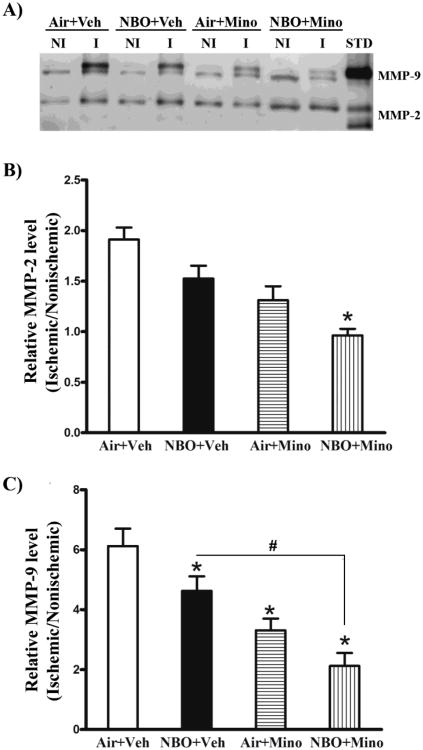Fig. 3.
Effects of NBO, minocycline and their combination on MMP-2/9 induction in the ischemic brain after 90-min MCAO and 48 hrs of reperfusion. MMP-2 and -9 were analyzed by gel gelatin zymography. (A) A representative gelatin zymogram shows MMP-2/9 induction in the nonischemic (NI) and ischemic (I) hemispheric tissue of each group. According to MMP-2 and -9 standards (STD), the pro-MMP-2 and 9 were clearly seen in all samples, while their active forms were not or only barely detectable. Veh: vehicle; Mino: minocycline. The relative band intensity of MMP-2 (B) and MMP-9 (C) was quantitated and expressed as the hemispheric ratio (ischemic/nonischemic). Cerebral ischemia and reperfusion induced a 0.9-fold increase in MMP-2 and 6.1-fold increase in MMP-9 in the ischemic tissue. NBO, minocycline or their combination significantly attenuated MMP-2/9 induction (*P < 0.05 versus Air + Veh). Compared to NBO alone, a greater inhibition was observed for the combination therapy on both MMP-2 and -9 (#P < 0.05 versus NBO + Veh). Compared to minocycline alone, the combination led to a further reduction in MMP-2, but not in MMP-9 (&P < 0.05 versus Air + Mino). NBO, minocycline or their combination showed no significant effects on the basal levels of MMP-2 and -9 in the nonischemic hemisphere. Data are expressed as the mean ± SEM, n = 8 for each group.

